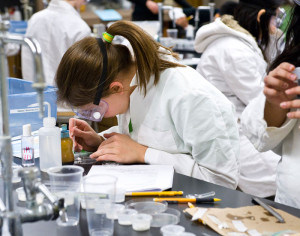Some women spend their time playing other people in front of cameras and offering lifestyle advice. Some women work in public health. Some play ice hockey, some are French professors.
 From the annals of bad health advice, actress Gwyneth Paltrow is under fire for a post on her website GOOP by Dr. Habib Sadeghi with the inflammatory title “Could There Possibly Be a Link Between Underwire Bras and Breast Cancer??” The research discussed in the article has been widely discredited, including by the American Cancer Society.
From the annals of bad health advice, actress Gwyneth Paltrow is under fire for a post on her website GOOP by Dr. Habib Sadeghi with the inflammatory title “Could There Possibly Be a Link Between Underwire Bras and Breast Cancer??” The research discussed in the article has been widely discredited, including by the American Cancer Society.
A 2014 study in which 1,044 women ages 55 to 74 were interviewed about their bra wearing, Fred Hutchinson Cancer Research Center (also known as Fred Hutch) found absolutely no link between bras and breast cancer. Specifically, Lu Chen, a researcher in the Public Health Sciences Division at Fred Hutch, said in an article on the center’s website (one that’s cited in a footnote of the GOOP article), “Our study found no evidence that wearing a bra increases a woman’s risk for breast cancer. The risk was similar no matter how many hours per day women wore a bra, whether they wore a bra with underwire, or at what age they began wearing a bra.”
 Diane Mapes, who was diagnosed with breast cancer in 2011 and underwent chemotherapy, radiation and a double mastectomy (what she calls “the full monty”), is a public health writer for FredHutch.org and also blogs about her breast cancer experience at DoubleWhammied.com. She told Salon, “If you get your advice from Gwyneth Paltrow, you’re probably not serving yourself particularly well. If people want public health advice, there’s a lot of other sites where they can go to get it.”
Diane Mapes, who was diagnosed with breast cancer in 2011 and underwent chemotherapy, radiation and a double mastectomy (what she calls “the full monty”), is a public health writer for FredHutch.org and also blogs about her breast cancer experience at DoubleWhammied.com. She told Salon, “If you get your advice from Gwyneth Paltrow, you’re probably not serving yourself particularly well. If people want public health advice, there’s a lot of other sites where they can go to get it.”
Girls rock. Women rock. People rock. Gwyneth doesn’t.

